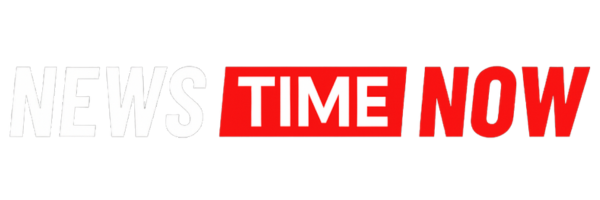The shift to hybrid work—a blend of remote and in-office presence—was once a temporary measure, but it has quickly become a defining feature of the modern global economy. This profound change in work structure has created a new operational paradigm for every business, but none more so than in the field of communications. In this environment, the responsibilities of the traditional Public Relations department have been amplified and digitized, transforming the role of the corporate communications agency into an essential strategic partner.
In a hybrid world, the challenges are twofold: how to maintain a cohesive, engaged internal culture when teams are distributed, and how to project a unified, trustworthy external identity when the lines between corporate and personal digital presence are constantly blurring. The modern agency is no longer just a message gatekeeper; it is an architect of distributed culture, a crisis-ready digital command center, and a strategic integrator of internal and external narratives.
The Internal Imperative: Unifying a Distributed Workforce
The most immediate challenge posed by the hybrid model is internal communications. The spontaneous interactions that once built camaraderie and transferred institutional knowledge—the “water cooler moments”—are now largely absent, creating potential information silos and a risk of proximity bias where in-office employees receive more face time with leadership and feel more “in the loop.” Studies have shown that poor internal communication reduces employee productivity and job satisfaction, underlining the critical need for a new communication strategy.
To combat this, the modern corporate communications agency focuses on three pillars of internal strategy:
- Intentional Inclusivity: The agency designs communication protocols that ensure equal access to information for all employees, regardless of location or time zone. This often involves creating central, easily navigable digital hubs (intranets), establishing clear guidelines for channel use (e.g., Slack for quick updates, email for formal documentation, recorded video for high-impact announcements), and championing asynchronous communication.
- Leadership Visibility and Empathy: In a distributed setting, leaders cannot rely on physical presence alone to inspire trust. The agency crafts highly visible, regular communications for leadership—such as video updates, virtual town halls, and candid Q&A sessions—that prioritize transparency and empathy. This human-first approach is crucial, as confidence in leadership behavior strongly correlates with a positive organizational impact in a hybrid model.
- Culture and Belonging: To prevent disengagement, the communications partner develops continuous cultural campaigns that use storytelling, employee-generated content, and recognition programs to reinforce corporate values. This shifts the perception of culture from a physical place to a set of shared behaviors and values, ensuring that the company mission is felt by every employee, whether they are working from a home office or a physical desk.
The External Challenge: Cohesion in a Fragmented Media Landscape
While internal structures have become more complex, the external media environment has remained fiercely fragmented and always-on. For the corporate communications agency, this means the reputation management landscape has become more precarious than ever.
The actions and policies surrounding hybrid work itself are now powerful external reputation drivers. Companies that mandate a strict return-to-office (RTO) policy, for instance, often face public backlash that can harm recruitment efforts and customer perception. Conversely, organizations that communicate clear, flexible, and employee-centric policies are often recognized as employers of choice. The agency plays a vital role in managing this external narrative by:
- Policy-as-PR: Advising on how internal policies (like hybrid flexibility and well-being initiatives) can be strategically framed and communicated externally to enhance employer brand and corporate reputation.
- Integrated Storytelling: Ensuring that the messaging delivered to employees about purpose, values, and strategy is perfectly aligned with the messaging delivered to stakeholders, media, and customers. In the transparent digital age, any internal-external disconnect is immediately exposed, eroding trust.
- Media and Stakeholder Engagement: Navigating the complexity of a 24/7 news cycle where journalists are often operating remotely. Agencies maintain robust media relations, using digital platforms and data analytics to pitch stories that resonate and provide expert spokespeople quickly, ensuring the brand’s perspective is heard accurately and rapidly.
The Technology Backbone: Data, AI, and Security
The glue holding a successful hybrid communication strategy together is technology. The modern corporate communications agency operates as a technology integrator, selecting and managing a bespoke tech stack designed for distributed teams.
AI, in particular, has become indispensable for internal and external monitoring. On the external front, AI-powered social listening tracks sentiment shifts, identifies emerging reputational threats before they escalate into full crises, and analyzes the share of voice across fragmented media channels. Internally, AI tools can help analyze employee feedback from surveys and digital channel engagement to quickly identify communication gaps or areas of dissatisfaction.
Furthermore, the expansion of the corporate perimeter due to hybrid work introduces significant data security risks. The agency often collaborates with IT and legal teams to craft and communicate stringent, clear data security protocols and training, safeguarding sensitive information and intellectual property. A corporate reputation is inseparable from its commitment to data privacy, and the agency is responsible for communicating this compliance and commitment both to the workforce and the public.
Defining the Strategic Communications Mandate
The transition to a hybrid workplace is not just an HR matter; it is a critical communications challenge that determines whether a business thrives or merely survives. By integrating sophisticated technology, applying deep behavioral insights, and executing coordinated internal and external strategies, the modern corporate communications agency transforms communication from a supporting function into a core strategic asset. They ensure that a company’s narrative remains cohesive and compelling, building the trust and transparency necessary for organizational resilience and sustained success in a world where flexibility is the new non-negotiable standard.

